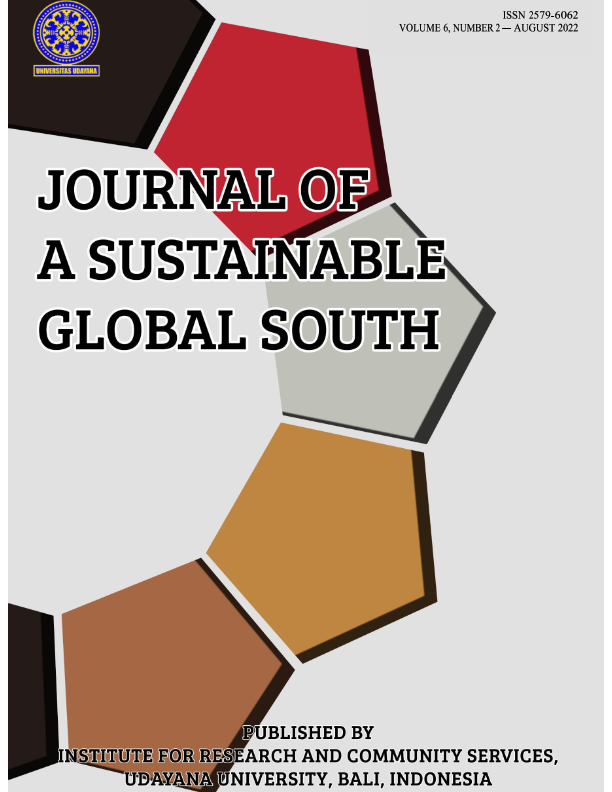Comfort Of Pedestrian Roads In The City Of Singaraja An Assessment Of User Behavior
Abstract
This study focuses on the concept of pedestrian path arrangement in terms of physical and non-physical conditions as well as user behavior. The research was conducted in commercial areas on Jalan Ahmad Yani and Diponegoro in Singaraja City, based on the phenomenon of pedestrian paths that are currently experiencing a change of function. The research method used is a qualitative method using place-centered mapping techniques for data collection. The place-centered mapping technique is used for mapping the location of activities / pedestrian paths and user sketches in using pedestrian paths which results in the concept of structuring pedestrian paths. The results of this study indicate that the current pedestrian paths in Singaraja City are not in accordance with the behavior of its users due to physical conditions and the change in the function of the pedestrian paths by parking, trading and displaying merchandise. So the concept of structuring the comfort of the pedestrian path that is produced is in the form of a pedestrian lane that should not be obstructed by behavioral activities or other supporting facilities, the need to provide an on-street parking area, the need for attention in terms of the pavement material used on the pedestrian path to comply with standards and the need for additional leveling. as well as pedestrian pathway dividers.
Downloads

This work is licensed under a Creative Commons Attribution 4.0 International License.










(1).png)


